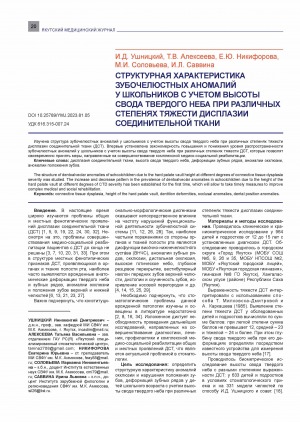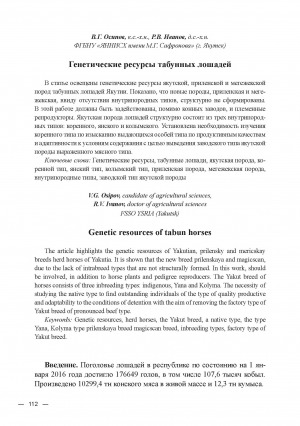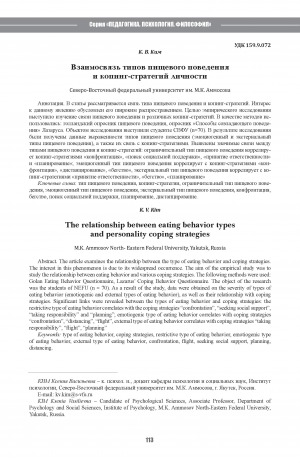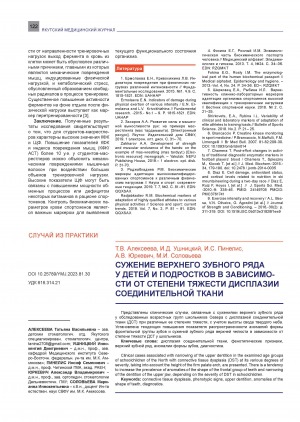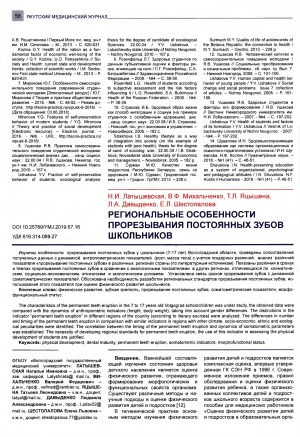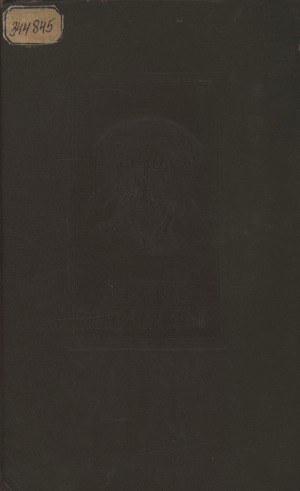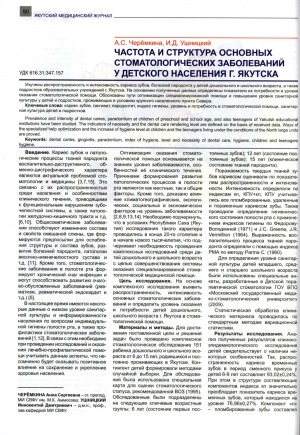
Клинико-морфологические особенности зубочелюстного аппарата у молодежи в Кемеровской области = Clinical and morphological features of the dental apparatus in young people in the Kemerovo region
Статья в журнале
Русский
616.314:614.255.6(571.17)
10.25587/2587-5590-2025-1-66-74
стоматологический статус; нарушения окклюзии; деформации зубных рядов ; изменения анатомического положения и формы зубов; зубочелюстная система ; лица молодого возраста; европеоиды; монголоиды; тип лица; эстетические индексы; ental status; occlusion disorders; deformations of dentition ; changes in the anatomical positionand shape of teeth; dental system; young people; Caucasians; Mongoloids ; face type; aesthetic indices
To date, a high level of detecting major dental diseases among the population is determined, which results in tooth loss and impaired function of the dental system, especially in young people. At the same time, preventive and predictive measures of dental anomalies are based on the results of clinical and epidemiological studies, which make it possible to clarify and detail the level and structure of occurrence of various forms of occlusion disorders, deformations of dentition, changes in the anatomical position and shape of teeth. The conducted examination of 1,574 people aged 18 years revealed a high prevalence of dentoalveolar anomalies, where the indicator was 75.1%.At the same time, the frequency and structure of dentoalveolar anomalies in the examined groups, stratified by the studied parameters and anamnestic data of the orthodontic treatment, were clarified and detailed. The prevalence of dentoalveolar anomalies in residents of the Kemerovo region is characterized by the fact that 30.7% of those examined by the age of 18 underwent orthodontic treatment. In addition, 60% of those with a normognathic bite type underwent complete orthodontic treatment with correction of dentoalveolar anomalies. A certain influence on the change in anthropometric characteristics of the size of teeth and dental arches with the change of generations over the recent period, which is confirmed by the results of biometric studies of jaw models, is exerted by changes in environmental and socio-economic factors. At the same time, by ethnicity, a statistically significant difference was determined: most Mongoloid race had a wide, average face type and a straight profile compared to Caucasians, which proves the existence of anthropometric features in different ethnic groups that must be taken into account when carrying out therapeutic and preventive measures.
Клинико-морфологические особенности зубочелюстного аппарата у молодежи в Кемеровской области / М. В. Сергеева, Е. А. Киселева, О. П. Иванова [и др.] ; Кемеровский государственный университет, Северо-Восточный федеральный университет им. М. К. Аммосова, Медицинский институт // Вестник Северо-Восточного федерального университета им. М. К. Аммосова. Серия "Медицинские науки". - 2025. - N 1 (38). - C. 66-74. - DOI: 10.25587/2587-5590-2025-1-66-74
DOI: 10.25587/2587-5590-2025-1-66-74
- Прикладные науки. Медицина. Ветеринария. Техника. Сельское хозяйство > Медицина > Гигиена. Санитария,
- Прикладные науки. Медицина. Ветеринария. Техника. Сельское хозяйство > Медицина > Патология. Клиническая медицина > Стоматология,
- НАУКА ЯКУТИИ > ПРИКЛАДНЫЕ НАУКИ. МЕДИЦИНА. ТЕХНИКА. СЕЛЬСКОЕ ХОЗЯЙСТВО > Медицина > Патология. Клиническая медицина > Стоматология,
- НАУКА ЯКУТИИ > ПРИКЛАДНЫЕ НАУКИ. МЕДИЦИНА. ТЕХНИКА. СЕЛЬСКОЕ ХОЗЯЙСТВО > Медицина > Гигиена. Санитария.
Войдите в систему, чтобы открыть документ
